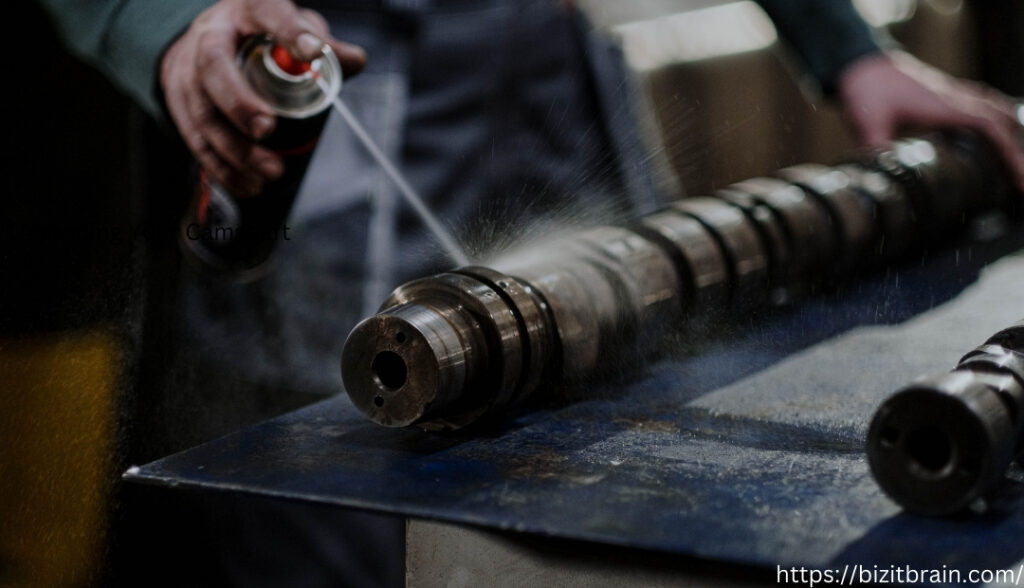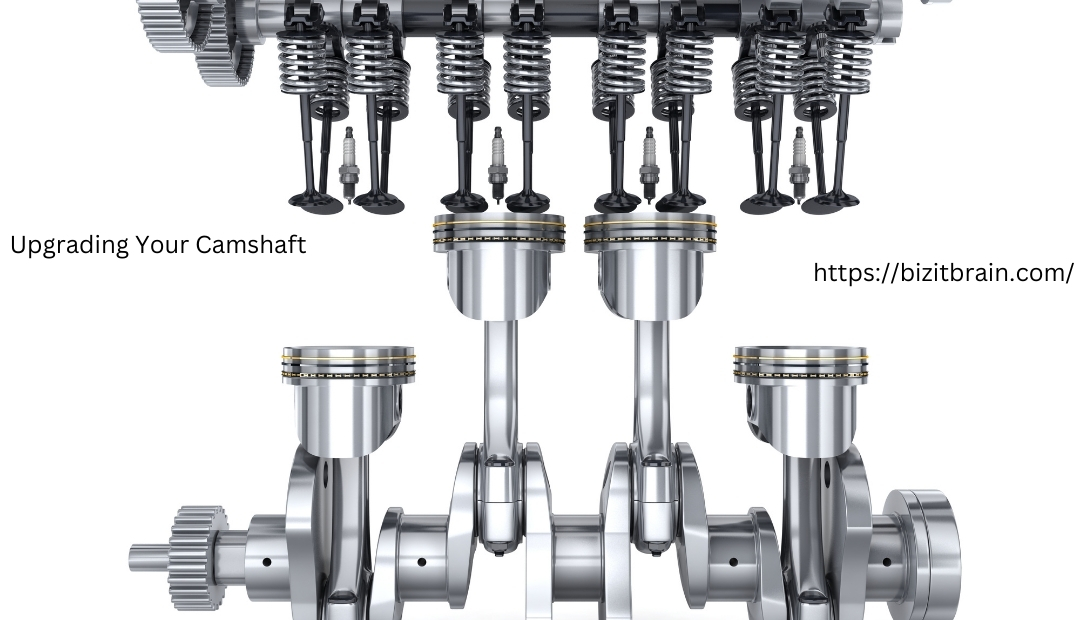
Upgrading your camshaft is a powerful way to enhance performance. Whether you’re hitting the track or cruising on the highway, understanding this crucial component can make all the difference. Let’s dive into what a camshaft does and how it can transform power and torque in your engine. Get ready for an exhilarating ride!
Upgrading Your Camshaft: Enhancing Power and Torque in Your Vehicle
Upgrading your camshaft can significantly boost your vehicle’s power and torque. A performance camshaft alters timing and airflow, allowing for improved combustion efficiency. This change translates to enhanced acceleration and speed.
Choosing The Right Camshaft :
Choosing the right camshaft depends on your engine type and driving style. Whether you want more low-end torque or high-end horsepower, there’s a perfect match waiting for you in the aftermarket world.
Camshaft
The camshaft is a crucial component in your vehicle’s engine, controlling the timing and movement of the intake and exhaust valves. Its design can significantly influence performance, affecting both power output and fuel efficiency.
Positioned within the engine block
Positioned within the engine block or cylinder head, it rotates to synchronize with the crankshaft. A well-designed enhances torque delivery during various driving conditions, providing a better overall experience on the road.
Construction
Its design features lobes that push the engine’s valves open at precise intervals.The construction also incorporates a shaft with carefully machined surfaces to ensure smooth operation. This precision allows for optimal performance in delivering power and torque throughout the vehicle’s acceleration range.

Location in engine
The cam shaft is a crucial component located within the engine block or cylinder head. Its position varies depending on the design of the engine, influencing how it interacts with other parts.
In overhead cam (OHC) engines, it’s positioned above the cylinders. In pushrod engines, it resides within the block, driving valves through lifters and pushrods for efficient performance.
Drive systems
Drive systems play a crucial role in how the operates within an engine. They connect different components, ensuring that the camshaft rotates at the correct speed and timing relative to the crankshaft.
There are several types of drive systems, including chain, belt, and gear-driven setups. Each system has its pros and cons, impacting performance and maintenance requirements for your vehicle.
Performance characteristics
Performance characteristics of a significantly influence engine output. They determine how air and fuel mix, impacting horsepower and torque levels. An optimized camshaft can enhance acceleration and responsiveness.
Timing And Lift
Different profiles affect valve timing and lift, leading to varied performance outcomes. A well-chosen can help achieve the desired balance between efficiency and power for your specific driving needs.
Alternatives
When considering alternatives to upgrading your camshaft, explore options like ECU tuning and performance exhaust systems. These modifications can enhance horsepower and torque without the complexity of a full camshaft replacement. Each choice offers its own benefits, allowing you to customize your vehicle’s performance based on specific driving needs. It controls the timing and operation of the engine’s valves, ensuring they open and close at the right moments during each cycle.
The camshaft uses specially shaped lobes to push against valve lifters, which then activate the valves. This process allows air and fuel into the combustion chamber while expelling exhaust gases efficiently.
Old Tech
Many car enthusiasts consider the camshaft old tech, yet its design remains fundamental to engine performance. This component has evolved significantly but still retains principles from decades past.
Basic Mechanism
The basic mechanism of a camshaft—a rotating shaft controlling valve timing—has stood the test of time. While modern advancements enhance efficiency, understanding this traditional technology is crucial for any driver looking to upgrade their vehicle’s power and torque effectively.
Synchronicity and Shape
The synchronicity of a camshaft’s operation is crucial for engine performance.
Shape plays a significant role as well. Different profiles can greatly influence power delivery, throttle response, and overall efficiency. A well-designed camshaft can turn an average engine into something truly remarkable.
Advantages in Numbers
Upgrading your camshaft can significantly boost your vehicle’s performance. Studies show that changes in valve timing and lift can enhance power output by 10-20
Additionally, torque improvements often reach similar percentages, offering better acceleration and responsiveness. Numbers like these highlight the tangible benefits of investing in a high-performance camshaft for any serious car enthusiast.
Change on the Horizon
Advancements in technology and engineering are reshaping how camshafts function, leading to improved efficiency and performance.
Innovations
like variable valve timing systems are becoming more common, giving drivers better power delivery across various RPM ranges. These changes promise a future where enhancing your vehicle’s capabilities becomes easier than ever before.
What Does a Camshaft Do?
By precisely regulating valve movement, it enhances engine performance.
Camshaft Configurations
They can significantly influence how air and fuel enter the combustion chamber, impacting overall power and efficiency.
Each design offers unique benefits, catering to various driving needs—from increased horsepower to better torque delivery at different RPMs.
Variable Valve Timing
This adaptability allows for improved power output and fuel efficiency across various RPM ranges.
By altering the camshaft’s operation dynamically, VVT enhances combustion efficiency. It ensures better torque delivery during acceleration, making it a crucial feature in modern engines seeking to balance performance with economy.
Lots More Information
It controls the timing of valve openings and closings, directly impacting airflow into and out of the combustion chamber.
Understanding its various configurations can help you choose the right upgrade for your vehicle. Whether you’re aiming for better horsepower or improved torque, knowledge is key to making informed decisions about your camshaft options.
Parts of A Camshaft
A camshaft consists of several key components that work together to manage engine timing. The main parts include the lobes, which control valve opening and closing; the shaft itself, which provides support; and bearings that reduce friction.
Additionally, there are other elements like the cam gear for synchronizing with the crankshaft. Each part plays a crucial role in optimizing engine performance.
Camshaft in Cars:
Is a crucial component in automotive engines, playing a key role in controlling valve timing
Typically made from durable materials like steel or cast iron, camshafts come in various configurations to suit different engine designs. Understanding their function can help you make informed upgrades for better power and torque.

Working Principles
This coordination ensures optimal air-fuel mixture intake and exhaust gas expulsion. The timing of these actions is crucial in maximizing performance, enhancing power output, and improving fuel efficiency. Each design variation impacts how effectively an engine breathes.
Types of Camshafts in Car Engines
Car engines feature various types, each serving specific performance needs. Common options include overhead camshafts (OHC) and pushrod designs. OHC allows for higher RPMs, while pushrods offer simplicity in smaller engines.
Additionally, there are single and dual overhead camshafts (SOHC and DOHC). Dual configurations optimize airflow at different speeds, enhancing both power and efficiency across the rev range.
Materials for Making Car Camshafts
Car camshafts are typically made from high-quality steel or cast iron for durability and strength. These materials can withstand significant stress while maintaining precision in movement.
Some performance camshafts use lighter materials, like aluminum, to reduce weight without sacrificing power. Each material choice impacts the engine’s efficiency and overall performance, making it a critical decision during manufacturing.
Failure of Camshaft And Possible Solutions
A failing camshaft can lead to poor engine performance, misfiring, and unusual noises.
If you notice these signs, immediate inspection is crucial. Solutions may involve replacing the camshaft or its components, ensuring proper alignment during installation to prevent future issues. Regular maintenance can also help catch problems early on.
Suitable Methods for Manufacturing
Manufacturing camshafts involves precision and specialized techniques. Common methods include CNC machining for accuracy, forging for strength, and casting for complex designs. Each technique offers distinct advantages in durability and performance.Material Properties. Additionally, heat treatment processes enhance material properties, ensuring optimal functionality under high-stress conditions. Choosing the right method is crucial to achieving desired power and torque enhancements in vehicles.
Drz400 Cam Shaft Retainewr
The DRZ400 cam shaft retainer is a crucial component for maintaining the stability of your engine’s performance. It ensures that the camshaft remains securely in place, allowing for optimal timing and power delivery.
Proper installation of this retainer can significantly enhance your bike’s responsiveness and longevity. Upgrading or replacing it can lead to noticeable improvements during rides, providing a smoother experience overall.
Drz400 Exhaust Cam Shaft Cao
The DRZ400 exhaust cam shaft CAO is a crucial component for enhancing engine performance. It optimizes the exhaust process, allowing for better airflow and increased power output.
Upgrading to this specific camshaft can lead to improved torque and throttle response. Riders often notice significant differences in their bike’s overall performance, making it a popular choice among enthusiasts looking to maximize efficiency.
Cam Shaft Sensor
The cam shaft sensor plays a crucial role in engine performance by monitoring the position of the camshaft. This information helps optimize timing for fuel injection and ignition, ensuring smooth operation.
When faulty, a cam shaft sensor can lead to various issues like poor acceleration or misfires. Replacing it promptly can restore your vehicle’s efficiency and power delivery.
Cam Shaft Postion Censor Bank 2 On 540i 2003
The cam shaft position sensor bank 2 on the 2003 BMW 540i plays a critical role in engine management. It monitors the position of the camshaft, ensuring optimal timing for fuel injection and ignition.
When this sensor malfunctions, it can cause misfires or poor performance. Regular inspections help prevent issues that could lead to costly repairs or decreased efficiency in your vehicle’s operation.
What Is A Cam Shaft
A cam shaft is a crucial component in an engine, responsible for controlling the opening and closing of intake and exhaust valves.
Typically made from durable materials like cast iron or steel, cam shafts come in various configurations..
where is the cam shaft
The camshaft is typically located inside the engine block, above the crankshaft.
In many engines, especially V-type configurations, you might find it on top of the cylinder head. Some vehicles even utilize dual overhead camshafts for enhanced performance and efficiency. Its placement significantly impacts engine design and function.
what does a cam shaft do
A cam shaft plays a crucial role in controlling the timing of engine valves. It opens and closes the intake and exhaust valves, ensuring proper airflow during each cycle.
By influencing valve lift and duration, the cam shaft optimizes power delivery. This process enhances torque and responsiveness, making it essential for performance enthusiasts seeking improved acceleration and efficiency from their engines.
What Does a Cam Shaft Sensor Do
A cam shaft sensor plays a crucial role in monitoring the position of the camshaft. It sends real-time data to the engine control unit (ECU), ensuring accurate timing for fuel injection and ignition.By providing precise information, this sensor helps optimize engine performance. It also aids in reducing emissions while enhancing overall efficiency, contributing to smoother power delivery during acceleration.
How Much Is a Cam Shaft
The cost of a cam shaft can vary significantly based on several factors. On average, you might expect to pay anywhere from $150 to over $1,000 for aftermarket options. Prices depend on the brand, materials used, and specific applications.
High-performance cam shafts designed for racing or modified engines typically fall at the higher end of that spectrum. Installation costs may also add up if you’re not doing it yourself.
Always consider quality alongside price when upgrading your vehicle’s camshaft; it’s an investment that can lead to enhanced performance and driving experience in the long run.
